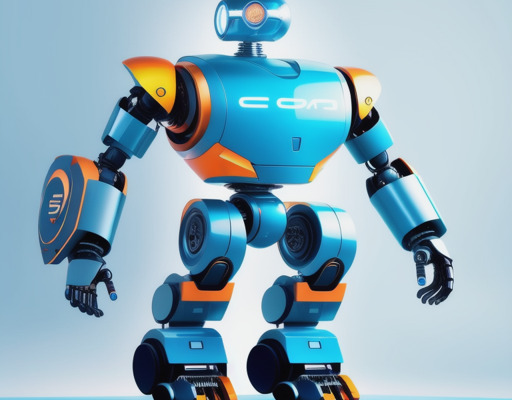In a groundbreaking AI breakthrough, the realm of stock price prediction is being unraveled with unprecedented accuracy and precision. The application of AI language models, such as GPT-3, shows great promise in accurately predicting stock prices. An experiment led by Alejandro Lopez-Lira from the University of Florida’s Finance Institute showcased the impressive predictive capabilities of the ChatGPT chatbot.
The ChatGPT Experiment
Alejandro Lopez-Lira’s Pioneering Research
Alejandro Lopez-Lira, a visionary in the field of finance, embarked on a pioneering research journey. His goal? To explore the untapped potential of AI language models in predicting stock prices. The experiment he conducted would soon reveal the remarkable possibilities that lay ahead.
ChatGPT’s Impressive Predictive Capabilities
Lopez-Lira and Yuehua Tan trained ChatGPT to analyze financial news headlines and determine whether they indicated positive or negative future price developments for specific stocks. The AI-powered chatbot’s predictions demonstrated remarkable accuracy, surpassing conventional stock market analysis tools and random predictions.
Limitations of AI Language Models
The Challenge of Precise Mathematical Calculations
While the experiment displayed the potential of AI language models, it also highlighted their current limitations, particularly in performing precise mathematical calculations. A presentation by Microsoft in February 2023 revealed that AI-powered chatbots struggle with mathematical tasks.
Focus on Sentiment Analysis
ChatGPT’s Approach to Stock Price Prediction
In the stock experiment, ChatGPT didn’t generate target corridors for analyzed stock prices and wasn’t tasked with mathematical calculations. Lopez-Lira solely relied on analyzing news sentiment to predict future market trends based on headlines.
The Role of News Sentiment
The essence of ChatGPT’s success lies in its ability to decipher the sentiment hidden within financial news headlines. It can discern whether the news is likely to have a positive or negative impact on stock prices, a feat that human analysts often find challenging.
Slow Adoption by Financial Professionals
The Hesitation to Embrace AI in Trading Strategies
The surprising results of the experiment suggest that stock market professionals have yet to fully embrace the power of AI language models in their trading strategies. The effectiveness of AI-powered chatbots in analysis and forecasting raises questions about the continued reliance on human analysts when AI can perform the same tasks just as effectively.
AI vs. Human Analysts
Are AI language models destined to replace human analysts? While they show immense promise, the human touch in financial analysis remains invaluable, especially in interpreting complex market dynamics and unforeseeable events.
Temporal Relevance and Predictive Obsolescence
Real-Time AI Analysis and Its Implications
Lopez-Lira anticipates that as companies increasingly employ real-time AI analysis of headlines, the predictive ability of ChatGPT and similar models will diminish over time. The speed at which news is factored into price actions renders predictions based solely on analyzed headlines obsolete within seconds.
Impressive Performance in Stock Price Prediction
ChatGPT’s Extensive Training Data
During the experiment, ChatGPT was trained on over 50,000 headlines related to Wall Street, Nasdaq, and small-cap companies. The AI-powered chatbot successfully classified news as positive or negative and accurately predicted upward or downward movements for the following day.
Accurate Classification and Predictions
ChatGPT’s ability to classify news sentiment and predict stock price movements with precision is a testament to the advancements in natural language processing and machine learning.
Outperforming Random Predictions
In a world where randomness often reigns, ChatGPT’s consistent success in outperforming random predictions showcases its potential to provide actionable insights to traders and investors.
Conclusion
The Potential of AI Language Models
AI language models, exemplified by ChatGPT, exhibit immense potential in predicting stock prices through sentiment analysis of news headlines. However, it’s crucial to acknowledge the limitations of these models, particularly in mathematical calculations. The financial industry’s gradual adoption of AI language models and the rise of real-time AI analysis may impact their predictive efficacy. Nevertheless, the experiment’s results point towards a promising future for AI in the financial sector, potentially reshaping the role of human analysts in the industry.
FAQs
- How does ChatGPT analyze news sentiment for stock price prediction? ChatGPT deciphers sentiment in financial news headlines to determine whether they indicate positive or negative future price developments for specific stocks. It relies on natural language processing techniques to make these predictions.
- Can AI language models replace human analysts in the stock market? While AI language models like ChatGPT show promise, they are unlikely to completely replace human analysts. Human analysts bring expertise, intuition, and an understanding of broader market dynamics that AI models currently lack.
- What are the limitations of AI language models in stock price prediction? AI language models may struggle with precise mathematical calculations and can be limited to analyzing sentiment in news headlines. They may also face challenges in adapting to rapidly changing market conditions.
- How does real-time AI analysis affect stock price predictions? Real-time AI analysis of news headlines can impact stock price predictions by making them more time-sensitive. Predictions based solely on analyzed headlines may become obsolete within seconds as new information becomes available.
- What is the significance of ChatGPT’s training data in stock price prediction? ChatGPT’s extensive training data, consisting of over 50,000 headlines, allows it to learn and recognize patterns in financial news sentiment. This data contributes to its ability to make accurate predictions.
